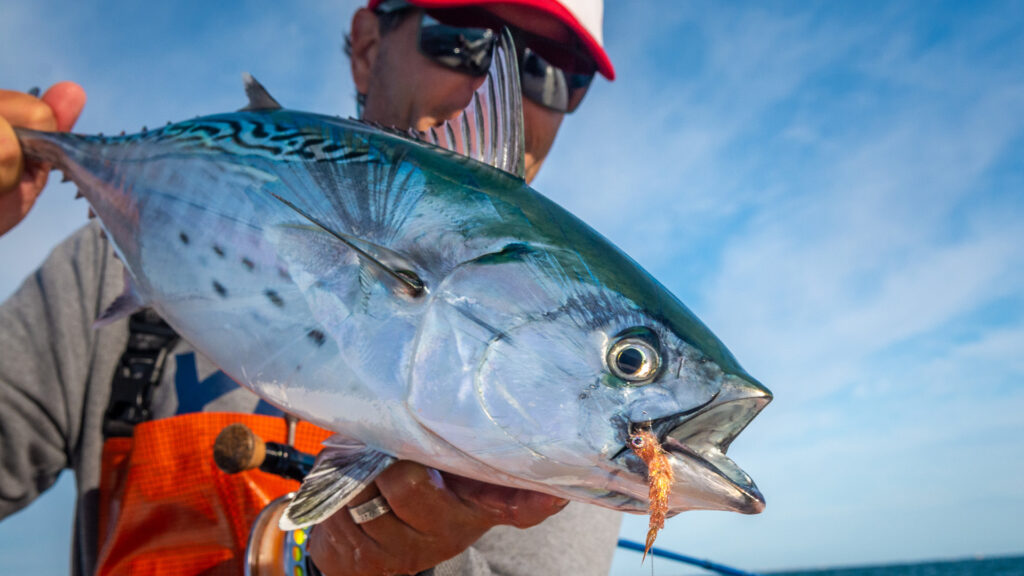She collects rubber-band bracelets, likes sporty, checkered tennis shoes and the thrill of a springy trampoline. One more thing: She just happens to be the best female fly caster in the world.
Her name is Maxine McCormick. And she is 15. That’s right, f-i-f-t-e-e-n.
She’s not old enough to drive, yet she has beaten Steve Rajeff and her 11-time world champion coach, all while piling up a slew of hardware at the national and world-championship levels the past three years.
At this summer’s world fly-casting championships on the blustery coast of England, the then 14-year-old Portland, Oregon resident won the trout accuracy competition with 52 points, 21 points ahead of the second-place finisher and took home top honors in Salmon (two-handed) distance with a toss of 189 feet. She also placed second in the Sea Trout (one-handed) distance, launching a world-record cast of 161 feet in the prelims.
At the 2016 worlds, at age 12, she won the trout accuracy competition. To put all of this in context, Rajeff, long considered the top fly caster in the world, won his first world title in 1972 at age 16.
What do they both have in common? Extraordinary vision.
“Maxine is a super healthy outdoor kid that happens to have phenomenal eye sight,” Chris Korich, McComick’s coach, said. “Early on I noticed with the steps that I gave her she was able to sight and measure target distances. She was able to make her decisions and pick out the fly, make her measurements and then lay down the fly faster than anyone I’ve seen since Steve Rajeff. Steve had just eagle vision as a kid and still has really good vision.”
McComick’s vision, Korich said, has been measured at 20/10, which gives her the uncanny ability to process the intricate relationships between distance, target and loop trajectory.
“It’s like target shooting,” Korich said. “You see your fly in the air, you measure your target. From an accuracy target shooting standpoint, what people don’t realize is that distance casting is extreme accuracy casting. When I’m going to cast beyond a normal fishing distance, bomb something over 150, 200 feet, the precision it takes to do that is like any other sport at the highest level, a lot of precision, like when you steer an Indy 500 car, so you don’t hit the guy next to you. Eyesight and reflexes are important at 200 miles an hour. When Rajeff and I are making a distance cast, we’re aiming, figuring out where the wind is going and where to throw this cast. We’re picking a reference mark. It’s not just side to-side-alignment. It’s a trajectory based on the wind, higher, lower.
“We’re constantly aiming. It’s like fishing casts. What percentage of your fishing casts are you not aiming?”
McCormick not only aims, she focuses. Her practice sessions are usually short, but rarely does her concentration stray.
“She is like Michael Jordan focused on that task,” Korich said. “I don’t say that lightly. She has that focus. She has that intensity. She can’t stand losing. She can’t stand getting beat.”
The Golden Gate Angling & Casting Club alumna does not lack perseverance. Perhaps that explains her affection for fly casting.
“At first it was a challenge and I like a challenge,” McCormick said. “Competition is also really fun. And every time I go fly cast, I know it’s going to improve my fishing, which also motivates me. That’s something I Iike about it as well.”
McCormick’s training started with the fundamentals, the length of stroke, the grip and the stance — albeit with down-sized tools of the trade — an old Fenwick Eagle. Korich sanded the handle for proper sizing.
“I’m like the Soup Nazi (from Seinfeld) on how you grip the handle,” he said. ”It’s not an option for me. If the grip doesn’t fit, I’m going to get it right.”
Korich chose the Fenwick because of its slow action. He wants his new students to feel the bend in the rod. He now recommends the 7 and 8-foot TFO Bug Launcher for younger beginners to simulate the ebb and flow of the rod load.
“The handle is smaller, for smaller hands with compressed cork,” Korich said. “That’s important, just like if you don’t have the appropriate size with a tennis racquet, baseball bat or golf clubs. It’s ridiculous we don’t have handle options in fly fishing. (The Bug Launcher) has standard graphite and fuller action. It bends deeper down to your hand. You can feel what you’re doing.”
Each of Korich’s Bug Launchers are balanced with a ultra-light reel — for a reason.
“They’re balanced in such a way you can keep a relaxed grip,” Korich said. “When you get everything right, you barely have to hold on to the rod to rotate the rod correctly. And it’s easy to stop the rod. You don’t have to grip the handle tight, so you can throw smoother loops.”
Meanwhile, McCormick’s skinny loops continue to pierce the competition. With the 2018 World Championships now fully in the rearview mirror, the fly-casting community now turns its attention to the 2020 Worlds in Sweden, and all indications are McCormick probably will return to defend her titles.
“My goal for the longest time was to become the World Champion,” she said. “That continues to be my goal.”
Long-term expectations, however, have yet to be defined and likely will be dictated by how long McCormick wants to compete.
“Assuming fair conditions, no one’s going to beat Maxine,” Korich said. “The foundation we’ve laid, the mechanics, her loops, are so superior to 95 percent of the competition — men, too — it’s just a question of whether she wants to put the work in with all the things that will be going on later on.”
Thoughts on Maxine and her success on the competitive fly-casting circuit? Ever tried the Bug Launcher? Feel free to share your comments on one of our social media pages.






